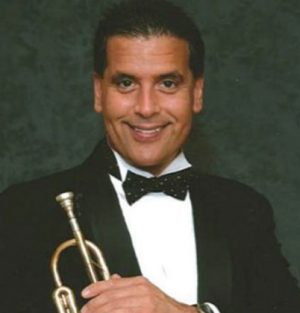Award-Winning Teacher: In-Person Learning Amidst COVID an Uphill Battle at Best
We are part of The Trust Project

By Joseph S. Lento
With the exception of New York City public schools, all other large city school districts are opening using “remote learning” while thousands of small suburban school districts are opening for in-person instruction.
The nation’s leading doctors and scientists at the CDC with the support of the AAP (American Academy of Pediatricians) and the White House have given very specific guidelines school districts must adhere to in order to open during this Pandemic.
Schools provide students a myriad of services from sanitation to nutrition, safety, medical and educational instruction.
Most schools have a very high student to staff ratio with many districts sustaining new shortfalls in staffing due to COVID-19 making meeting CDC guidelines almost impossible to meet.
To examine this topic let’s use the average of 1000 students per school which can be adjusted for your specific school and resources but the ratios will be very close. You can find the size of your specific school and district on your state or school district websites. Using this number here are student to staff ratios.
1- Custodians: 250 to 1
2- Food service employees: 200 to 1
3- Transportation personnel: 40 to 1
4- School Nurses and Security: 250 to 1
5- Teachers: 34-50 to 1
6- Administrative Assistants: 175 to 1
7- Administrators: 250 to 1
2- Food service employees: 200 to 1
3- Transportation personnel: 40 to 1
4- School Nurses and Security: 250 to 1
5- Teachers: 34-50 to 1
6- Administrative Assistants: 175 to 1
7- Administrators: 250 to 1
As we see, the ratio of school personnel to students is extremely imbalanced which the pandemic has exposed. So, what are the real challenges with returning to in person learning during COVID-19? With depleted resources (and the numerous additional resources needed) the uncertainty of schools being able to adhere to CDC and AAP guidelines is an uphill battle, at best.
This ratio is comparable to going to a sporting event, concert, movie or the theater, each of which have been banned during this Pandemic. Opening schools during the COVID-19 Pandemic while keeping entertainment venues closed is contrary to the guidelines by the CDC.
Keeping your children safe in accordance with the Pandemic guidelines by the CDC and AAP will place an inordinate physical and financial strain on our schools that simply cannot be met without a substantial influx of new funding. For example, the Yonkers Public School District in New York State will need nearly $11 million to acquire the PPE supplies mandated by the CDC to reopen safely and additional funding to rehire recently released staff while needing more.
New York State alone has nearly 700 school districts serving nearly 3,000,000 students. Even using a conservative number of $2 million per school district for PPE supplies New York State would need a whopping (roughly) $1.5 billion in new funding for school districts.
The costs listed above might also include repairs such as broken windows but would not include such things as the repair of or installation for new portable HEPA air filter systems now required.
The cost of a portable HEPA air filtration system per classroom costs approximately $1,300.
In New York there are nearly 5,000 schools and roughly 20 to 30 thousand classrooms. Each portable HEPA AIR filtration system would cost about $1300.00 per classroom. This does not include the costs for hallways, bathrooms, stairwells, gymnasiums, auditoriums or office spaces.
All aspects of a normal school day during this pandemic will drastically alter the length of time your children will be in school. Temperature checks alone could take up to one to two hours each day. In urban areas this could result in long lines on city streets effecting student safety as well as disrupting traffic, work schedules and public services. Dismissal will also cause similar delays as students will have to be dismissed in small social distancing groups. This could easily add an additional hour or more to the school day. We might be looking at a 10 to 12 hour school day.
In order to comply with social distancing mandates students will not be able to access bathrooms as needed and will require adult monitoring. Schools simply do not have enough bathrooms to follow the mandated guidance for social distancing.
School reopening plans call for students to eat at their desks. How will custodians clean up meals without interrupting instruction and without hiring additional custodians?
Serving breakfast and lunch to students in their classrooms would be a logistical impossibility and disrupt learning time. Eating in the cafeteria would not meet the social distancing mandates.
The school nurse would be limited to how many students can be seen and school safety officers would have to violate social distancing mandates to break up student altercations.
School reopening plans are calling for students to remain in one classroom all day requiring teachers to travel from room to room. Who will supervise students during teacher transition times?
Lastly, who will substitute for teachers when they will not expose themselves to such an environment of uncertainty?
Untold amounts of new resources are needed based on the CDC and AAP guidelines. The school day will have to be significantly extended and will impact the public at large while addressing a shortage in staffing concerns.
.
Isn’t it more sensible, cost effective and safe to keep schools closed until we truly have COVID-19 under control?
.
Isn’t it more sensible, cost effective and safe to keep schools closed until we truly have COVID-19 under control?
Joseph S. Lento was honored with a national teacher award in 2014 for his work in the arts and in 1999 was named NYC Public High Schools Teacher of the Year. He also operates Maestro Music Unlimited.

Examiner Media – Keeping you informed with professionally-reported local news, features, and sports coverage.
